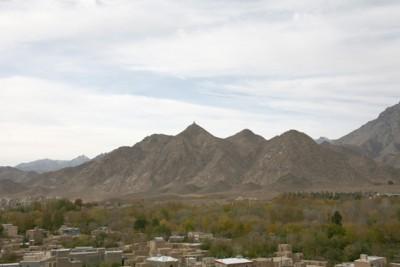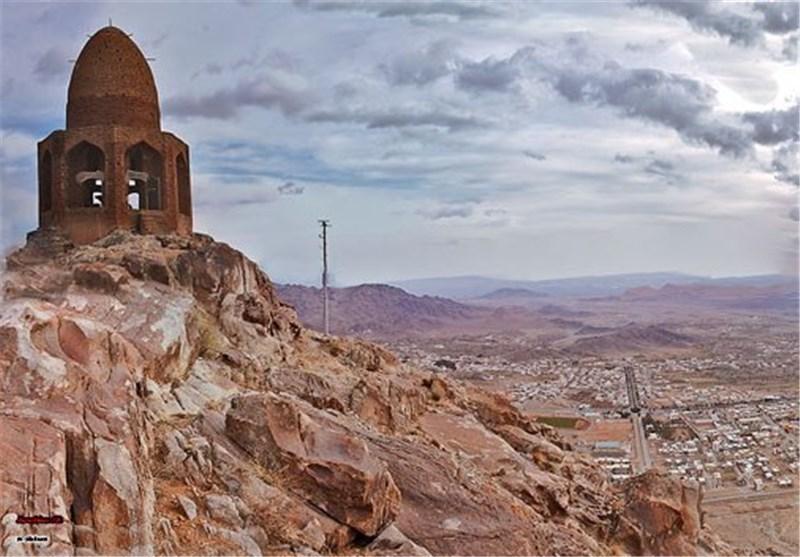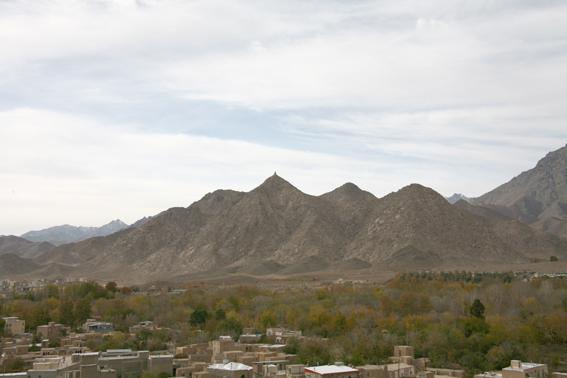On the way into Natanz from Isfahan, don’t miss the Gonbad-i Bāz – the unique Safavid hawking pavilion built by Shah Abbas the First as “the greatest tribute ever paid to a single bird”. This unusual survival of a non-religious Safavid building is an octagonal domed tower perched on a conical mountain near Natanz.

I love how it can be seen from all around. I love even more the stories that are told about why it was built.
Although Kleiss suggests that it is a royal pavilion for hunting the “numerous deer” in the area; most other writers, and all the many locals I have spoken to, say that it commemorates a very special hunting bird.
According to Encyclopaedia Iranica, in 1592-3 Shah Abbas the Great ordered a mausoleum built for his favourite hunting bird, the valiant and gallant Lavand. This bāz – the word denotes both hawks and falcons – died during a hunting party near Natanz. To “the great affliction of the shah”, who would have been only 21 years old, the bird drowned whilst “tenaciously chasing a partridge inside a deep well”. A slightly earlier painting in the Metropolitan Museum gives an idea of what this hunting party might have looked like.

The local version of the story is slightly different. It still concerns Abbas hunting near Natanz, a courageous bird, and a well. But in this account, just as Abbas went to drink, the “King’s darling” inexplicably struck his cup from his hand. When Abbas tried again, the bird attacked again. On the Shah’s third attempt, and the bird’s third strike, Abbas ordered the bird killed. As the Shah returned to the water to drink unmolested, the Shah, or perhaps one of his falconers, noticed a snake slithering away. The sharp-eyed bird had saved the Shah’s life, but paid the ultimate price for his faithfulness!
According to the Natanzi’s, it was actually then the mayor of Natanz who had the gonbad – the dome – built.
Many pavilions were built in the Safavid era, but very few have survived. This one is constructed in relatively permanent building materials and in a relatively inaccessible place. There is a path – which I only found out about after I failed to climb up without one!

